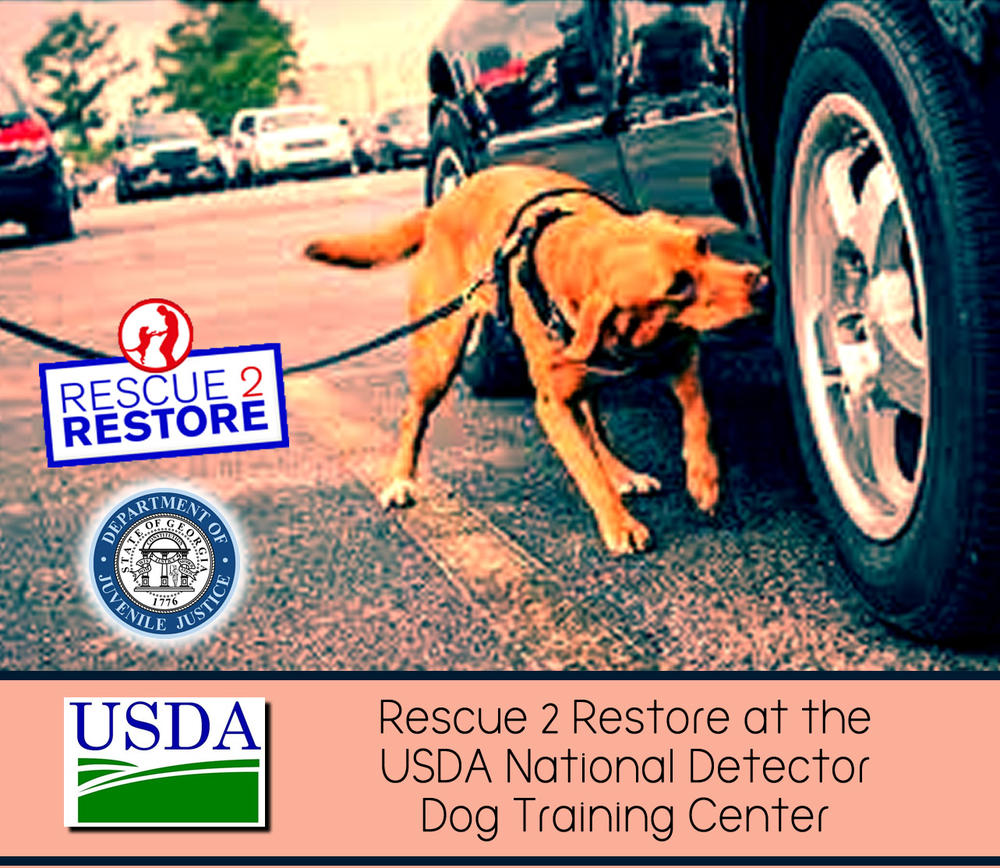
July 11, 2019
Rescue 2 Restore at the USDA National Detector Dog Training Center

Recently, students from the Macon Educational Transition Center (Macon ETC) were given a tour of the United States Department of Agriculture's (USDA) National Detector Dog Training Center (NDDTC) in Newnan, Georgia. The NDDTC, located on seventeen acres with eight buildings and more than one hundred kennels, provides training on inspecting air passenger baggage, cargo, mail, and parcels for prohibited or restricted agricultural items.
Sponsored by DJJ's Rescue 2 Restore program, the Macon ETC students learned about the importance of keeping prohibited agricultural items from reaching the United States. Contraband products such as pork, fruits, and vegetables can bring devastating diseases to this country, such as African swine fever and Bovine hoof and mouth disease. Certain parasites such as the Mediterranean fruit fly or coconut rhinoceros beetle can also destroy millions of dollars worth of crops if not initially detected by customs and other agents.
It is because of these threats that dog training at the NDDTC is so essential. On average, dogs have hundreds of millions of scent-detecting cells in their nasal cavities and can detect a single scent among many overlapping scents. A trained agricultural dog can scan a piece of luggage or mail package for illegal fruits and meats in seconds.
And, the training for these dogs can be intense. There is an initial ten to thirteen-week specialist canine training at the NDDTC. Training and evaluation continue at the dog's home port or station to maintain their skills. Once training is completed, the dogs will either give a passive/sitting response or an active response by pawing to indicate the presence of an agricultural product. Dog treats and praise are used to increase each dog's proficiency in completing the task at hand.
As the NDDTC tour guide walked the Macon ETC students through the center, he described the NDDTC as a "dog Utopia" with specially designed classrooms, outdoor exercise and play areas, and simulation rooms. Information provided about the classes was unique as it was learned that the air systems in these rooms were built to allow for specific scents and to allow for detection training.
Students were also shown a separate room at the NDDTC which had a working conveyor belt where dogs demonstrated their ability to run on a moving belt while sniffing out packages containing agricultural threats. Outdoor kennels and play areas surrounded by a bubbling creek provided a stress reliever for trainers and dogs alike. The state-of-the-art veterinary clinic held the travel kennels where graduating dogs would be placed to be sent to their new assignments around the country.
While impressed with the size, cleanliness and design of the NDDTC facility, the Macon ETC students were impressed by watching the dogs perform their jobs happily as if playing a game while maintaining the importance and vitality of the task at hand.
The Department of Juvenile Justice would like to thank the United States Department of Agriculture's National Detector Dog Training Center for their hospitality in providing tours to the Macon Educational Transition Center students. For more information on Rescue 2 Restore at DJJ, visit https://www.facebook.com/DJJRescue2Restore.



